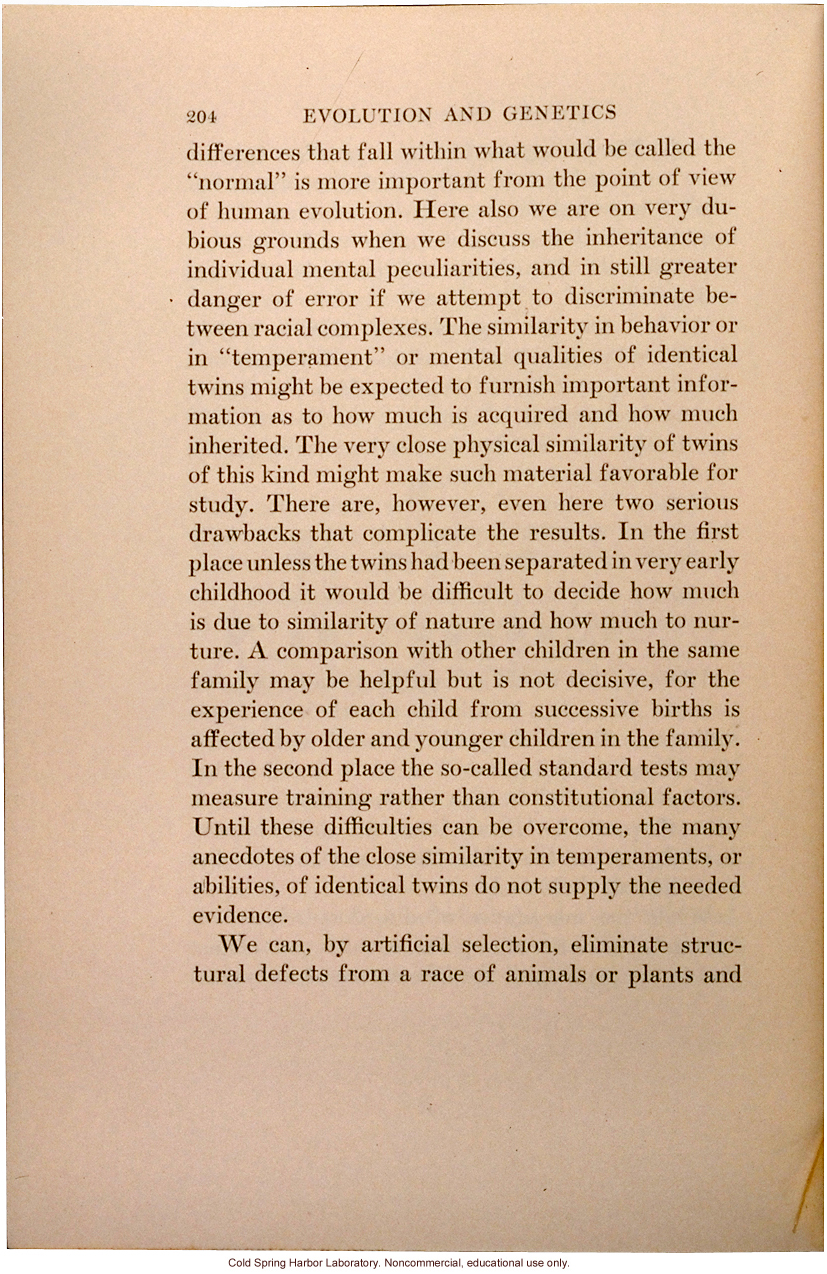204 Evolution and Genetics
differences that fall within what would be called the "normal" is more important from the point of view of human evolution. Here also we are on very dubious grounds when we discuss the inheritance of individual mental peculiarities, and in still greater danger of error if we attempt to discriminate between racial complexes. The similarity in behavior or in "temperament" or mental qualities of identical twins might be expected to furnish important information as to how much is acquired and how much inherited. The very close physical similarity of twins of this kind might make such material favorable for study. There are, however, even here two serious drawbacks that complicate the results. In the first place unless the twins had been separated in very early childhood it would be difficult to decide how much is due to similarity of nature and how much to nurture. A comparison with other children in the same family may be helpful but is not decisive, for the experience of each child from successive births is affected by older and younger children in the family. In the second place the so-called standard tests may measure training rather than constitutional factors. Until these difficulties can be overcome, the many anecdotes of the close similarity in temperaments, or abilities, of identical twins do not supply the needed evidence.
We can, by artificial selection, eliminate structural defects from a race of animals or plants and
[end]


